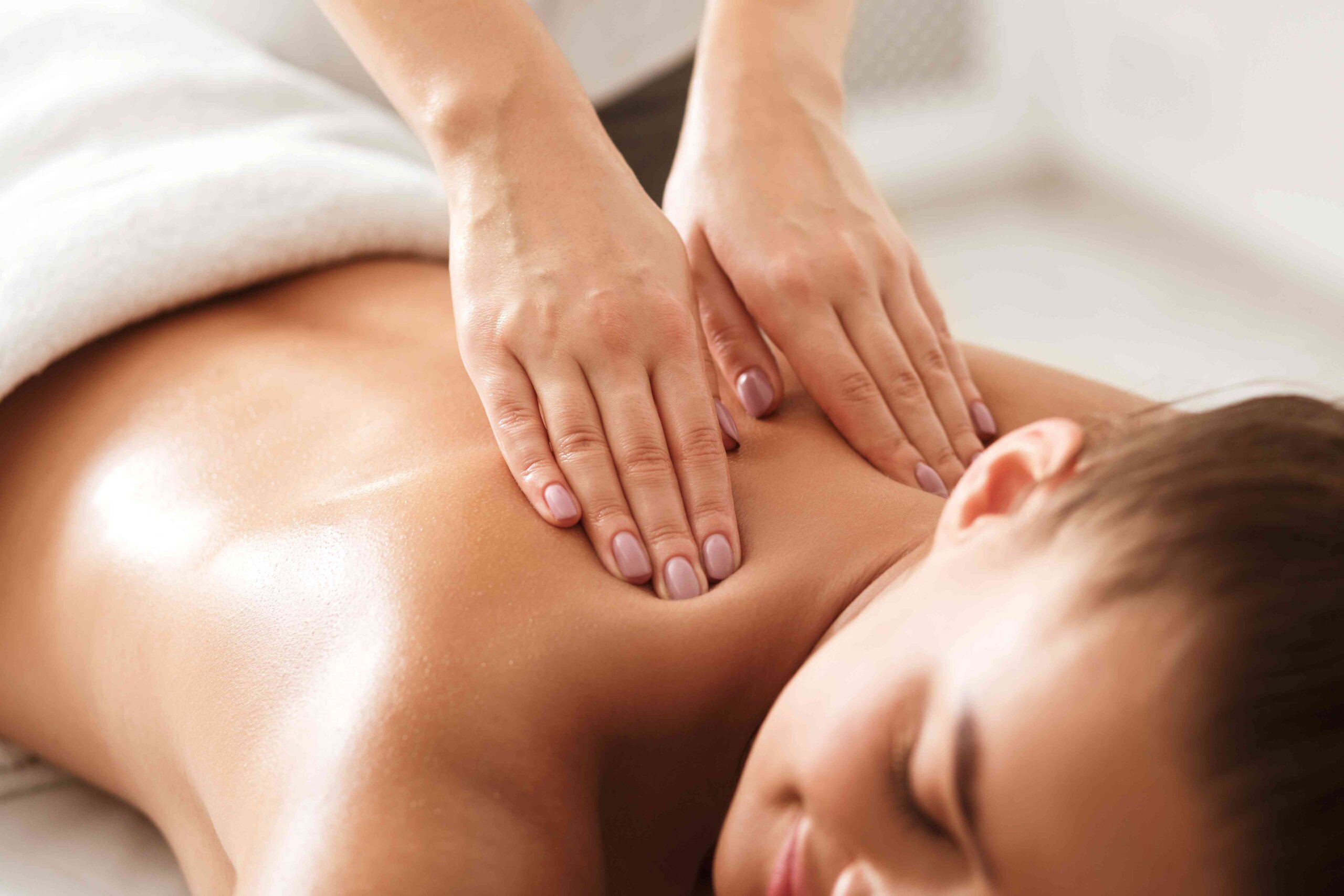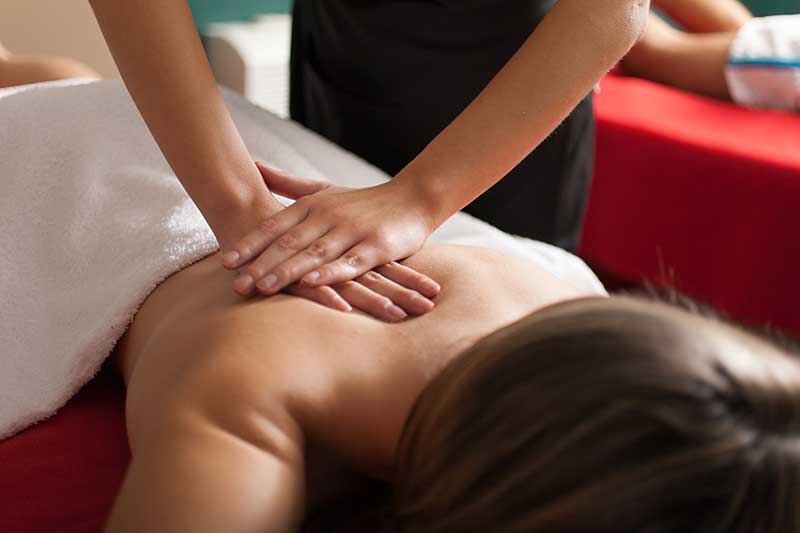What health benefits come from a Swedish body massage?

A Swedish body massage is one of the most well-known and widely practiced massage techniques in the world, celebrated for its gentle yet effective approach to relaxation and healing. Using long, flowing strokes, kneading, and rhythmic tapping, this massage style helps release muscle tension while calming the mind. Many people turn to Swedish massage not only for stress relief but also for its broader health benefits, ranging from improved circulation to better sleep. If you’re searching for a rejuvenating experience, a Full Body Swedish Massage Aurora, CO offers the perfect balance of relaxation and wellness.
What Is a Swedish Body Massage?

Origins and Background
The Swedish body massage originated in the early 19th century, credited to Per Henrik Ling, a Swedish physiologist and fencing master. Ling developed a system of therapeutic movements that combined medical gymnastics and massage techniques to improve physical health and rehabilitation. His approach became the foundation of what we now know as Swedish massage, and it quickly gained worldwide recognition for its ability to restore both the body and mind. Today, it remains one of the most requested therapies in spas and wellness centers around the globe.
Core Techniques Used in Swedish Massage
Swedish massage uses a combination of techniques designed to relax muscles, enhance circulation, and encourage healing. The five primary strokes include:
-
Effleurage (Long, Gliding Strokes)
-
Smooth, sweeping movements performed with the palms.
-
Promotes relaxation, warms the muscles, and prepares the body for deeper work.
-
-
Petrissage (Kneading and Squeezing)
-
Lifting and rolling of muscles to release tension.
-
Helps flush out toxins and improves nutrient delivery to tissues.
-
-
Friction (Circular or Cross-Fiber Movements)
-
Deep pressure applied with fingers or thumbs in small circles.
-
Breaks down adhesions (knots) and improves flexibility.
-
-
Tapotement (Rhythmic Tapping or Percussion)
-
Quick tapping motions using the sides of the hands, fingers, or cupped palms.
-
Stimulates muscles, awakens energy, and improves circulation.
-
-
Vibration/Shaking
-
Gentle trembling or shaking of muscles.
-
Relieves tension and encourages deep relaxation.
-
Together, these techniques create a flow that soothes both the nervous system and the musculoskeletal system, leaving clients feeling refreshed and balanced.
How Swedish Massage Differs From Other Massage Styles
Although Swedish massage shares some similarities with other therapies, it stands out for its gentle yet effective approach:
-
Swedish vs. Deep Tissue Massage
-
Swedish massage focuses on relaxation and improving circulation using light to medium pressure.
-
Deep tissue massage targets deeper layers of muscle and fascia with firm, slow strokes, often used for chronic pain or injury recovery.
-
-
Swedish vs. Sports Massage
-
Sports massage is performance-oriented, designed to prevent or treat injuries and enhance athletic recovery.
-
Swedish massage is wellness-oriented, emphasizing relaxation and overall health benefits.
-
-
Swedish vs. Aromatherapy Massage
-
Aromatherapy combines essential oils with massage for emotional balance.
-
Swedish massage, while it can use oils, primarily emphasizes physical relaxation and muscle relief.
-
In short, Swedish massage is ideal for anyone seeking stress relief, improved circulation, and a gentle yet restorative treatment, whereas other modalities are more specialized for deeper therapeutic needs.
Key Health Benefits of a Swedish Body Massage

Reduces Stress and Promotes Relaxation
One of the most celebrated benefits of a Swedish massage is its ability to melt away stress. During a session, the body releases endorphins—the “feel-good” hormones—while simultaneously reducing cortisol, the hormone linked to stress. This natural shift in hormones helps calm the nervous system and puts the mind in a state of deep relaxation.
Beyond the physical response, Swedish massage also offers mental health benefits. Many clients report feeling lighter, happier, and more at ease after a session. Regular treatments can reduce anxiety, improve overall mood, and create a sense of emotional balance—perfect for those struggling with a busy lifestyle or high-pressure environment.
Improves Blood Circulation
The flowing strokes of Swedish massage are designed to stimulate healthy blood circulation. As the therapist works across the muscles, the gentle pressure encourages oxygen-rich blood to move more efficiently through the body. This process not only improves overall cardiovascular health but also delivers essential nutrients to tissues and organs.
Better circulation has several ripple effects:
-
Speeds up the removal of metabolic waste and toxins.
-
Enhances energy levels and combats fatigue.
-
Supports faster muscle recovery after workouts or physical activity.
For anyone dealing with sluggish circulation, cold extremities, or frequent tiredness, Swedish massage can serve as a natural booster for vitality and wellness.
Relieves Muscle Tension and Pain
Muscle tightness and stiffness are common issues caused by stress, poor posture, or repetitive movements. Swedish massage helps by loosening tight muscles and breaking down knots (known as adhesions) that restrict movement. Techniques like kneading and friction penetrate deep into the tissues, releasing built-up tension.
The result is not just immediate relief but also long-term benefits:
-
Reduced chronic pain in the back, neck, or shoulders.
-
Improved flexibility and joint mobility.
-
Better posture due to relaxed and lengthened muscles.
Whether you’re an office worker with tension from sitting all day, an athlete recovering from workouts, or simply someone experiencing everyday aches, Swedish massage offers gentle but effective pain relief.
Boosts Immune System Function
Swedish massage not only helps with relaxation but also supports the body’s immune system. One of the ways it achieves this is through improved lymphatic drainage. The lymphatic system is responsible for filtering toxins and carrying white blood cells that fight infection. Gentle massage techniques stimulate lymph flow, helping the body eliminate waste products more efficiently.
By reducing stress hormones like cortisol—which can weaken immunity—Swedish massage also strengthens the body’s natural defense mechanisms. This makes it easier to fight off common illnesses such as colds, while also enhancing overall resilience to stress-related health issues. Regular sessions can therefore play a valuable role in preventive healthcare.
Enhances Sleep Quality
Many people turn to Swedish massage as a natural remedy for insomnia or restless nights. The calming strokes have a direct effect on the parasympathetic nervous system, which slows the heart rate, lowers blood pressure, and prepares the body for rest.
Massage encourages the release of serotonin, a hormone that supports relaxation and is also a precursor to melatonin, the sleep hormone. This combination helps regulate the body’s sleep-wake cycle, promoting deeper and more restorative sleep. For individuals struggling with stress-induced sleeplessness or irregular sleep patterns, Swedish massage can be a powerful tool for regaining balance.
Improves Skin Health
Another often-overlooked benefit of Swedish massage is its positive impact on the skin. The rhythmic strokes increase blood circulation to the surface, delivering oxygen and nutrients that keep skin cells healthy and radiant.
Additionally, the use of massage oils—such as almond, jojoba, or coconut oil—provides deep hydration and nourishment. These oils not only reduce friction during the massage but also leave the skin feeling smooth, supple, and moisturized. Over time, regular Swedish massages can improve skin elasticity, tone, and overall appearance, contributing to a natural, youthful glow.
Who Can Benefit From a Swedish Body Massage?

Office Workers: Stress and Stiffness Relief
Spending long hours at a desk often leads to tight shoulders, stiff necks, and lower back pain. Office workers are especially prone to poor posture and stress-related tension. A Swedish massage helps by:
-
Releasing knots in overworked muscles.
-
Improving posture and flexibility.
-
Reducing stress levels that come with demanding workloads.
For professionals dealing with mental and physical fatigue, regular Swedish massages can provide a much-needed reset.
Athletes: Faster Muscle Recovery
While athletes may rely on sports massage for intense therapy, Swedish massage can also be extremely beneficial for muscle recovery and relaxation. It works by:
-
Increasing blood circulation to speed up healing.
-
Relieving soreness after workouts.
-
Preventing injuries by keeping muscles flexible and healthy.
Swedish massage is ideal for athletes during lighter training phases or recovery periods when they need relaxation rather than deep, intense work.
People With Insomnia or Anxiety
Swedish massage is widely recommended for individuals struggling with sleep problems or anxiety. Its calming effect on the nervous system helps regulate hormones, reduce mental stress, and promote emotional balance. Benefits include:
-
Better quality sleep through deeper relaxation.
-
Reduced anxiety and mental tension.
-
Improved mood and emotional stability.
For those who rely on natural remedies instead of medications, Swedish massage offers a holistic way to restore restful sleep and peace of mind.
Elderly Individuals: Improved Circulation and Mobility
As people age, issues like poor circulation, joint stiffness, and reduced mobility become more common. Swedish massage provides gentle stimulation without overwhelming pressure, making it a safe and effective option for seniors. Key benefits include:
-
Enhanced blood flow and oxygen delivery to tissues.
-
Relief from arthritis-related stiffness and discomfort.
-
Better range of motion and improved mobility.
Regular sessions can also improve overall comfort and contribute to a better quality of life for older adults.
Possible Risks and Considerations
While Swedish body massage is generally safe and suitable for most people, there are certain situations where caution—or even avoidance—is necessary. Understanding the potential risks ensures that you enjoy the benefits of massage safely and effectively.
When to Avoid Massage
Swedish massage should be postponed or avoided if you have:
-
Open wounds, burns, or skin infections – Massage can worsen irritation or spread infection.
-
Recent injuries or fractures – Pressure on healing areas can delay recovery.
-
Blood clotting disorders or recent surgeries – Increased circulation may pose health risks.
-
Severe osteoporosis – Bones may be too fragile for even light pressure.
-
Uncontrolled high blood pressure or heart conditions – Massage may put extra strain on the cardiovascular system.
-
Fever, illness, or contagious conditions – Massage can spread infection or worsen symptoms.
In these cases, it’s best to wait until you’re fully recovered or cleared by a doctor.
Importance of Consulting a Professional Therapist
Choosing a qualified massage therapist is essential for both safety and effectiveness. A professional therapist will:
-
Customize pressure and techniques to your comfort level.
-
Identify areas that may require special care or should be avoided.
-
Ask about your health history to ensure massage is appropriate for your condition.
If you have chronic medical issues—such as arthritis, diabetes, or circulatory problems—it’s always wise to consult your healthcare provider before beginning regular massage sessions. With the right precautions, Swedish massage can remain a safe and beneficial therapy for relaxation and wellness.
Conclusion
A Swedish body massage is more than a moment of relaxation—it’s a holistic therapy that supports both physical and mental well-being. From reducing stress and improving circulation to relieving muscle tension, enhancing sleep, boosting immunity, and even promoting healthier skin, the benefits extend far beyond the massage table. Suitable for office workers, athletes, seniors, and anyone seeking balance, this timeless therapy remains one of the most trusted forms of bodywork worldwide. If you’re looking for a way to unwind, restore energy, and improve your overall health, consider scheduling a Swedish body massage. Book a session and experience the difference—your body and mind will thank you.
FAQs
1. What are the main benefits of a Swedish body massage?
Swedish massage helps reduce stress, improve blood circulation, relieve muscle tension, boost the immune system, enhance sleep quality, and promote healthier skin.
2. How is Swedish massage different from deep tissue massage?
Swedish massage uses gentle to medium pressure for relaxation and circulation, while deep tissue massage applies firm pressure to target deeper muscle layers for chronic pain and injuries.
3. How often should I get a Swedish body massage?
For general relaxation, once a month is ideal. For therapeutic purposes—such as chronic pain, stress, or poor circulation—sessions every 1–2 weeks may provide better results.
4. Is Swedish massage safe for everyone?
Swedish massage is safe for most people, but it should be avoided if you have open wounds, recent injuries, certain medical conditions (like blood clotting disorders), or fever. Always consult a professional therapist.
5. Does Swedish massage really help with sleep and anxiety?
Yes. The calming techniques of Swedish massage lower stress hormones, relax the nervous system, and stimulate serotonin production, which supports better sleep and reduces anxiety.








